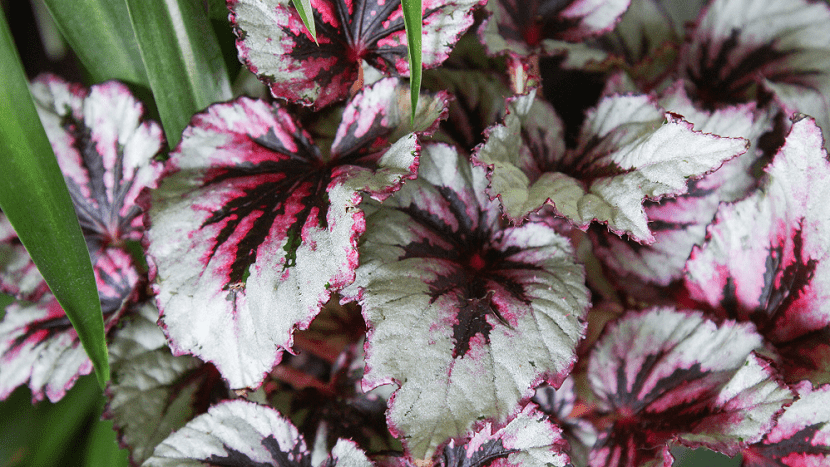
There are plants that stand out for their beauty and their ability to increase decoration in any room. Either because of their exotic shape or their bright and strong colors, they are plants that stand out as soon as you look at them. That is the case of the Begonia rex. It is nicknamed as the plant of a thousand colors and it is a species with a very peculiar shape and with a too attractive color. Its common name is painted leaf begonia but, in this case, it is better known by its scientific name Begonia rex.
Join us throughout this article because you will be able to know everything about its characteristics and care.
Key features
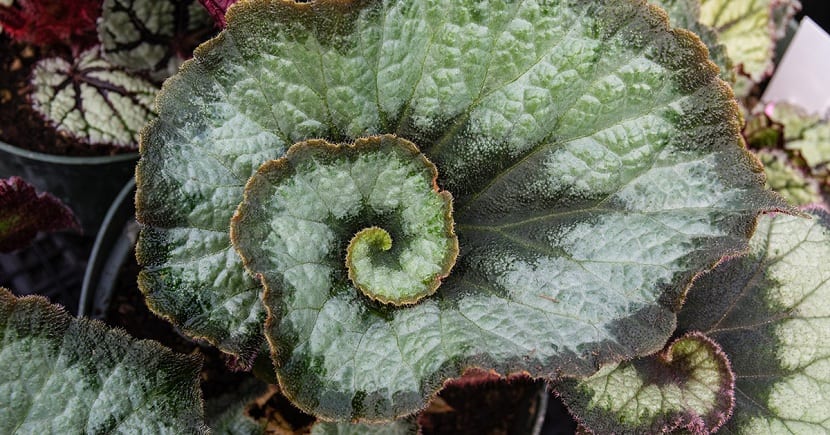
This plant is characterized by its huge leaves painted in various shades. This is the reason why it is called the plant of a thousand colors. The leaves have an infinite number of shapes. We can find them in the shape of a conch or a drop, with jagged or wavy edges and with a very varied color tone. By having a great variety both in colors and in shape, it is an ideal plant to place in gardens, porches and even indoors and give the decoration an incredible lift.
As for the color, we can find it between colors that go from white, green, pink, burgundy, silver or purple. It is a whole range of colors that can be chosen depending on the taste of each one. This feature offers great versatility because it can be adapted to more tastes.
Sometimes we can find the leaves with some small flowers both white and pink. Although these flowers are not impressive at all if we compare them with the size and color of the very showy leaves.
With so much variety of colors and types out there, it is impossible not to find one that you like for your garden. The leaves have sizes that can vary, but they can grow to a maximum of about 22 cm long and 13 cm wide. Now, having that size of leaf, the plant has to be big enough to house them. The total size is usually about 45 cm long and wide.
The size is perfect to achieve greater combinations with other plants that are annual, tropical and perennial. In general, when using the Begonia rex in a combination it is used as the center to attract more attention from the rest.
Caring for the Begonia rex
So much beauty and versatility when decorating would need more complex care. This plant needs different care at each time of the year in which we are or if we are going to place it indoors or outdoors.
If we grow them indoors, we must take into account that the lighting is optimal as if it were outdoors. It should be placed in bright places but in the shade and with a cool environment. If, on the contrary, we place them outside, we will need to protect them from the direct rays of the sun. If we are in an area with a colder climate, it is able to adapt to the sun's rays and generate a more intense red color.
Ground and light
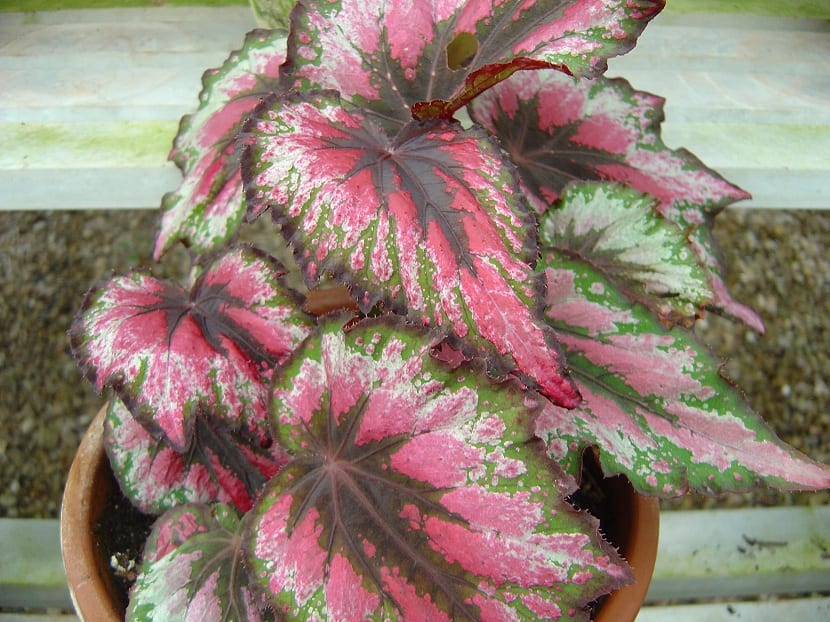
You need a fairly nutritious soil, which is loose and in which water does not accumulate, becoming waterlogged. It needs to have good drainage when we water. A good idea is to add a little perlite or sand to the peat to improve the sewer system and soil aeration. It is best to use mobs that have a more acidic pH ranging between 4,5 and 5. Let us remember that for the Begonia rex have these bright colors you will need a very nutritious soil.
As for the light, if we are going to locate it at home, it is best to place them in a window that faces north. In this way, it will have enough light to grow but it will never give direct sunlight on its leaves, preventing them from burning and causing damage. We must bear in mind that if the direct sun falls on its leaves, we will be causing them to dry from the beginning. Depending on the time the sun shines on them, the damage to the tissues will be greater or lesser.
Irrigation and temperature
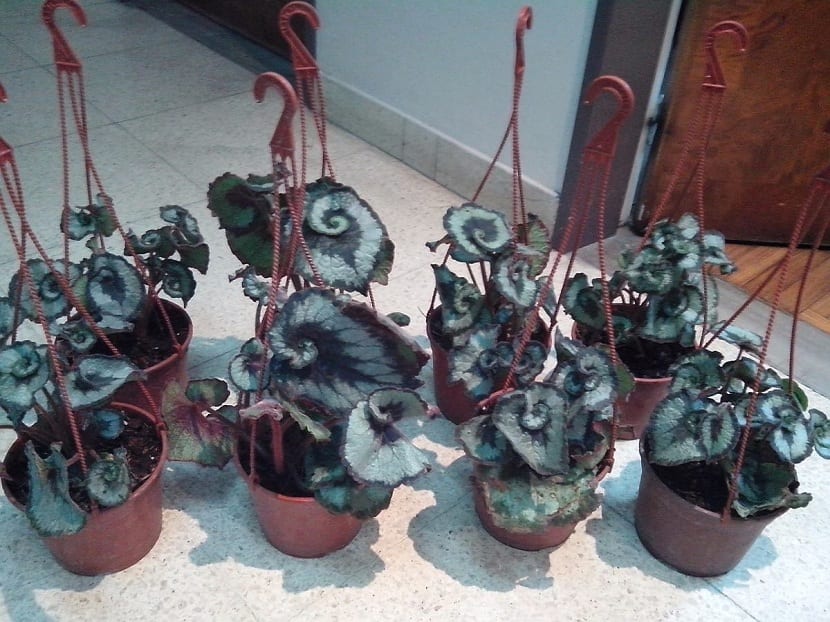
Painted-leaf begonia needs a lot of water, so we need to keep the substrate moist at all times. If the soil dries up, we will know soon enough because the leaves will lose all their texture and will be loose, drooping leaves. In the event that this happens to us, we can still save her. We just need to immerse it in water at room temperature until the usual texture is recovered.
The optimal temperatures for it to thrive are not very high. Around 20 degrees in when you experience better growth rates. In summer, it is better to put them on the terrace or balcony so that it is more airy, but we will always put it where it gives shade. If the sun can kill them in winter, imagine in summer.
If during the day and at night the temperature contrast is greater, we will have advantages in its growth. Thus, it is interesting to place them in patios where the sun does not get much so that the leaves grow with more color and texture.
In winter we must protect it to prevent it from suffering too much or wilting. The temperature should not be lower than 13 degreesotherwise it will die. In these cases, we will let the soil be not so wet.
Pruning and multiplication
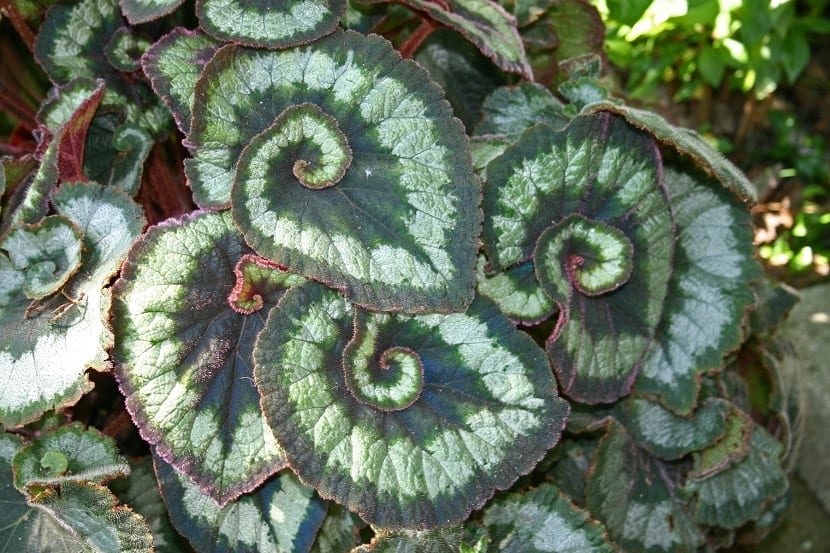
La Begonia rex does not need pruning, so we don't need to worry. It only requires to be eliminating the flowers that are damaged or withered so that the plant grows fresh in its entirety.
It can easily be multiplied by both by division of its rhizome as by cuttings of leaves and stems.
As you can see, it is a plant with more delicate care, but its enriching coloring is too good to be easy to care for. I assure you that you can find the color that you like the most to increase the ornamentation in your garden.